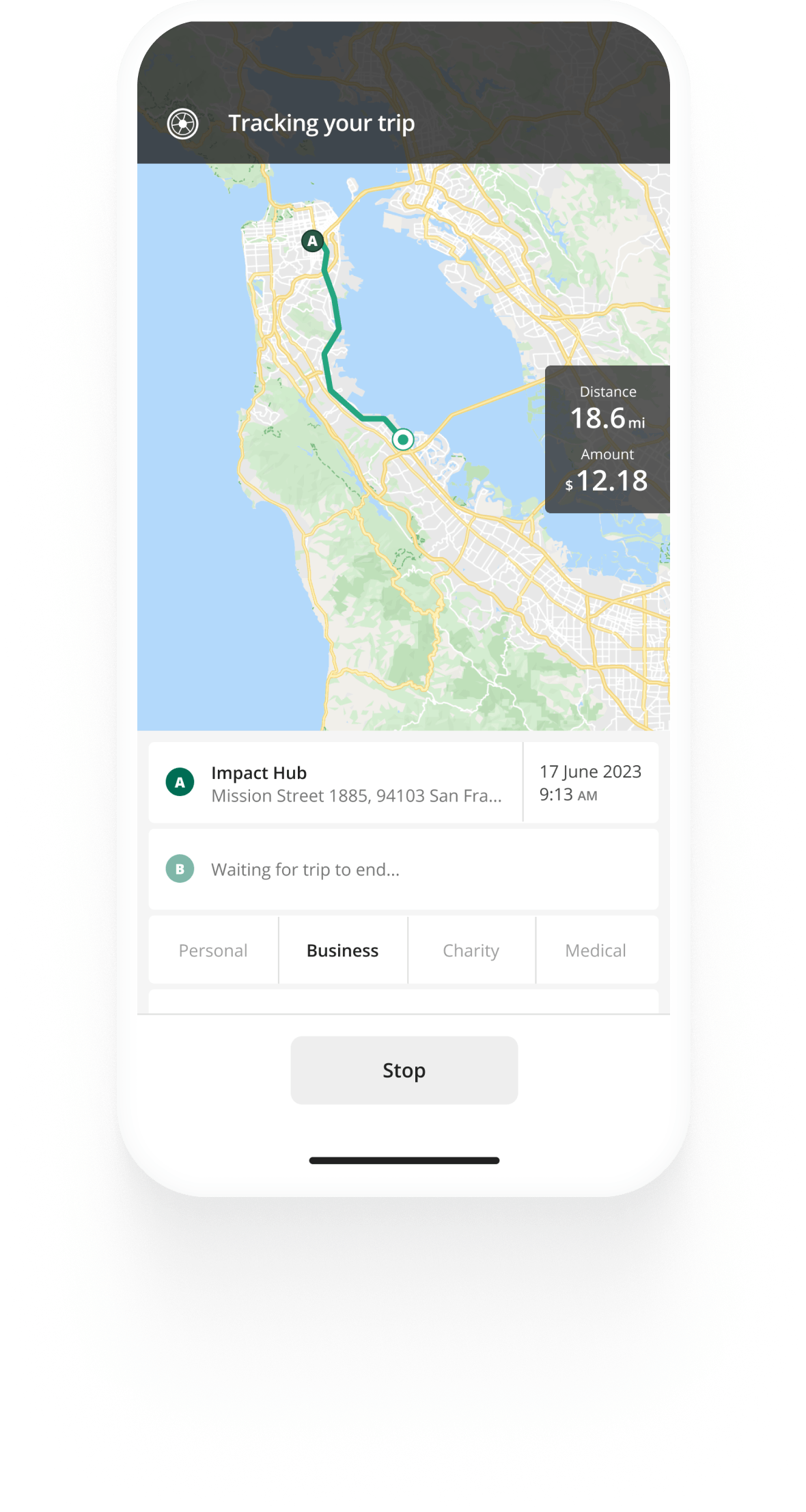Track mileage automatically
Get started
How to Keep an IRS-Compliant Mileage Log for Taxes
Keeping a tax-compliant mileage log can be the difference between ensuring you receive the maximum tax deduction for your mileage, or missing out on the money you’re entitled to.
In this article, we’ll take you through the practical steps of how to track mileage for taxes, different logging solutions, and what to pay attention to.
What is a mileage log book?
A mileage log is a record you keep for tracking your business driving. A well-maintained, accurate log book can help you deduct expenses from your tax payments, whether you are self-employed, or own a small business.
You're likely to get a deduction at tax time, if you use your car to:
- Meet clients
- Drive to conferences
- Travel between work locations
- Get supplies for your office


Mileage tracking made easy
Trusted by millions of drivers
Automate your logbook Automate your logbook

Automatic mileage tracking and IRS-compliant reporting.
Get started for free Get started for freeKeeping a mileage log in case of an IRS audit
If you don't have an up-to-date mileage log book and the IRS audits you, the authority may reject your claims for incurred business vehicle expenses.
According to the IRS, keeping a mileage log book is the most effective way to ensure that you have proof in the event of an audit. Reconstructed logs, back-dated entries, and estimated mileage may be challenged by the tax authority.
What to record in your log book
Regardless of your employment situation, you will almost certainly have to keep track of the following:
- Total mileage for the year (personal + business, so you can work out the percentage)
- Odometer readings at the start and end of the year
- Mileage for each business trip
- Date and time
- Place (your destination)
- Business purpose of the trip
The records must also be kept up to date. This implies that they must be completed at or near the time of departure. Anything that is updated once a week is generally considered sufficient.
Read more in-depth about mileage log requirements in the U.S.
Types of logs you can use to keep track of mileage
Pen-and-paper
You can buy a regular paper mileage log book either online or at most office supply shops for as little as $5.
However, it’s becoming more common for people to log their trips digitally to avoid losing data and ensure compliance with IRS requirements.
You can use an Excel, PDF, spreadsheet, or a mileage log book app like Driversnote to track automatically.
Spreadsheet

A spreadsheet log is an excellent choice as it allows you to keep your data safely stored online and will save you time compared to filling out a pen-and-paper log.
However, there is still a lot of manual work involved, as you must log the data yourself and make sure you have tracked the correct mileage for each trip.
You can check out our free mileage log template to help you get started and see if it’s the right fit for you.
Mileage tracking app
An app is the most time-efficient solution for keeping track of your mileage for taxes. You can automatically track your trips and have your data ready for you.
After you have logged your trips, you only have to go into the app and distinguish between personal and business driving. Then, at the click of a button, the app will generate a report you can send over directly to your employer or personal accountant.
Tips for keeping a mileage log for taxes
- Don't miss a trip! At the end of the day, verify whether you have properly tracked and logged your trips to ensure that all your logs are correct.
- Instead of using a physical log book, use an app to save time.
- Always log personal trips, as you need to be able to calculate the percentage of business trips out of all your driving for the deduction.
- Keep your logs for at least 3-4 years so that you can provide proof in case of an audit.
- Consult an accountant or a tax advisor if there’s something you’re unsure about.
Check out our updated IRS mileage guide for additional information on how to keep an IRS-compliant mileage log and all the regulations.
Note: If you’re located in California, you should also check our dedicated article on California mileage reimbursement, as the rules differ.
Keep in mind that this is a general overview of how to keep a mileage log book. The information here should be supplemented with information from your accountant, employer, and the official IRS website.
FAQ

Tired of logging mileage by hand?
Effortless. IRS-compliant. Liberating.
Top posts
Related posts
Free IRS Mileage Log Template - PDF, Excel and Sheets versions
Latest update: January 9, 2026 - 2 min read
Download the free 2026 mileage log template as PDF, Sheet, or Excel and keep track of your trips. Get your free printable mileage log.
Mileage Log Requirements
Latest update: December 2, 2025 - 2 min read
For mileage claims, you should track the time, miles, place, and purpose of each work trip. Get an overview of mileage log requirements.
IRS Mileage Guide
Latest update: January 5, 2026 - 10 min read
Mileage reimbursement in the US — rates and rules for employees, self-employed and employers in the U.S.
.svg)

